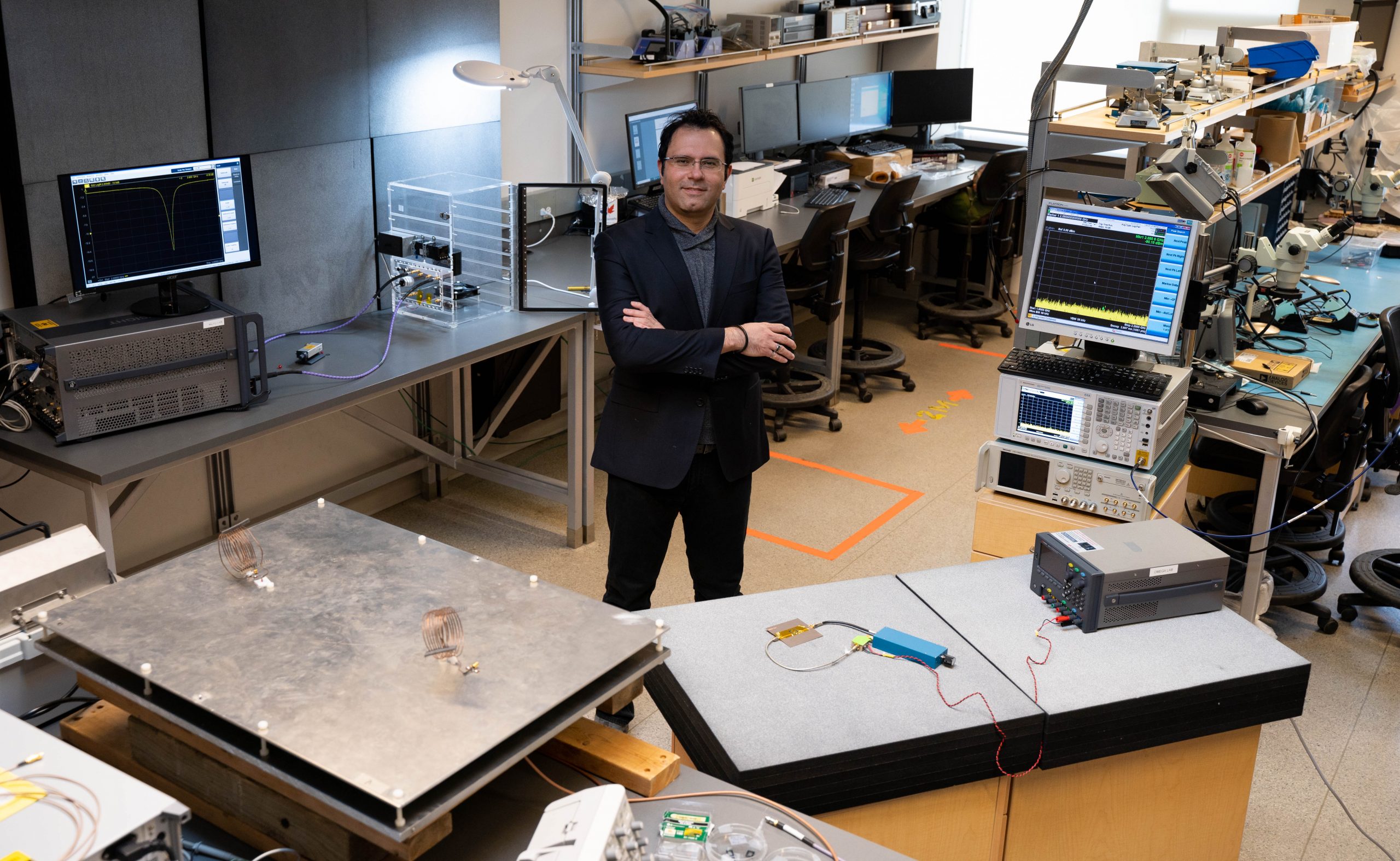Prof. Mohammad Zarifi, Assistant Professor in Electrical Engineering at the University of British Columbia’s (UBC) School of Engineering, was intrigued by this problem.
He had already done innovative postdoctoral work at the University of Alberta on planar microwave sensors for the oil and gas industry. Now he wondered whether these inexpensive, ultra-sensitive and rugged sensing technologies could offer solutions to this cold-weather problem.
He floated the idea with his colleague Kevin Golovin, Assistant Professor in Mechanical Engineering at UBC and an expert in de-icing and anti-icing surfaces. “We shared our background knowledge, and after a couple of coffees, decided we could do something.”
Marshalling the minds and hands of his team of Master’s and PhD students in UBC’s MicroElectronics and Gigahertz Applications (OMEGA) Laboratory, Zarifi asked them to run “initiative experiments” on whether microwave devices were sensitive to the dielectric properties of snow and ice. When they saw the results, he says, “We realized that we can do something amazing here.”
Although microwave sensors have been used in other applications, the research by Zarifi and his team was the first to show that microwave resonators could be used to detect ice and frost. Subsequent research produced a sensor with enhanced sensitivity and accuracy, capable of detecting ice formation within seconds in real time – a big improvement over existing sensing systems, which require time for ice to accumulate, then melt, in order to detect buildup.
In another development, Zarifi’s group coated their sensor with a superhydrophobic material to test how such coatings might affect ice accumulation. “It showed us how these coatings could delay formation of ice on surfaces,” Zarifi says. “It opens up a lot of other applications.”
“Prof. Mohammad Zarifi uses inexpensive, ultra-sensitive and rugged sensing technologies to improve safety in cold-weather environments.”
One such application is wind turbines. “Wind farm operators told us that they don’t know if ice is affecting energy generation until they see ice or notice a drop in power generated” he says. “So we made some design changes and improvements on the readout circuitry to make it more flexible to implement on differently shaped structures.”
Zarifi’s most recent sensor improvements include saltwater ice detection. His team is also working on wireless antennas with embedded ice-detecting sensors for use in large-area arrays such as on wind turbines.
This work has generated highly cited publications and at least three patents, and attracted the interest of research funders and industrial partners, including the Department of National Defense and the National Research Council, which will be testing his sensors in its wind tunnels. In addition to this, commercial partners in the U.S. and Norway will test his sensors on wind turbines and drones.
It’s an impressive track record for the early-career researcher, who joined UBC in 2017. Key to his success, he says is collaboration. But equally important has been his ability to conduct research continuously, without disruption. He credits this seamless research environment to CMC Microsystems, which has enabled his research since his student days.
“Thanks to CMC, my work has never been interrupted by lack of equipment or expertise,” he says. “Whether you are starting your career or relocating to a different university, it can mean a six to nine month gap in research simply because you don’t have access to the required instruments in order to perform experiments. That dead time didn’t happen to me.”
CMC’s support has included software and hardware, fabrication grants and access to fabrication labs, and free loans of expensive, industrial-calibre testing and analysis equipment. “And it’s also the staff support for my students,” he adds. “CMC facilitate my students’ learning and make them competitive in the engineering world. CMC makes a huge difference. They fuel my research.”
Photo courtesy of Mohammed Zarifi
March 2021

